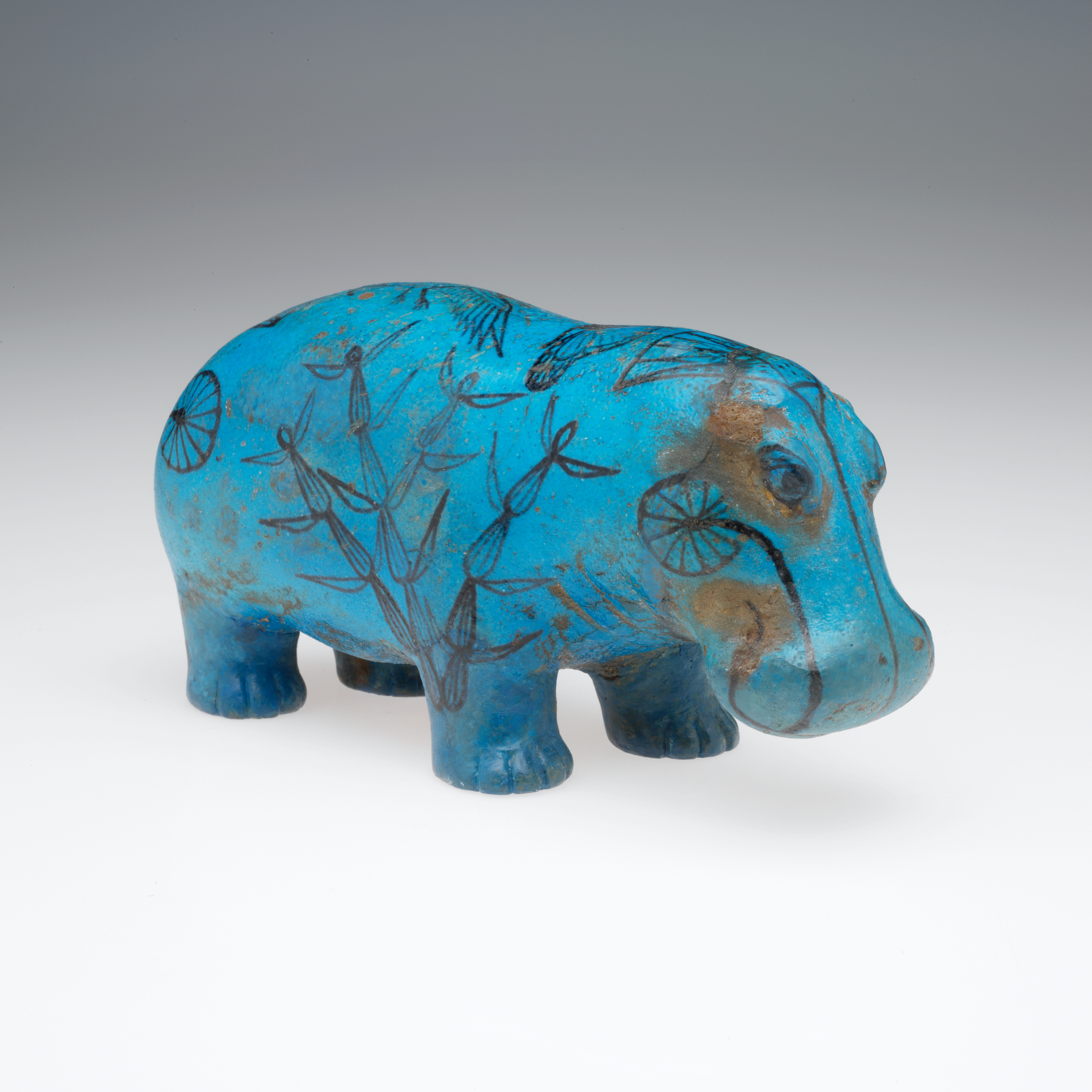A glass-like material associated with rebirth, Egyptian faience was often used to make grave goods. Hippos live in the Nile River, which ancient Egyptians considered the source of all life. Faience amulets held protective properties that could be transferred to the owner; they were worn during life and sewn into the mummy wrappings of the deceased. Faience shabtis were figures placed in tombs to perform labor in the afterlife. If the deceased is called upon to sow or irrigate the land, a shabti will answer, “Here I am” and do the work for them.
This faience hippo is currently on view in the Being and Believing in the Natural World exhibition at the RISD Museum. In more than 100 objects drawn from the museum’s Asian, Native American, and ancient Mediterranean collections, makers from 2000 BCE to the present day explore human relationships with the natural world.
P.S. Did you know that those cute hippos are scattered across world museums? Here you can see many of them and their locations!
P.P.S. If you love blue Egyptian Hippos as much as we do, please check our 50 Animals Postcard Set. Spoiler alert: The blue hippo is on one of these beautiful postcards! :)


 Unknown Artist
Unknown Artist